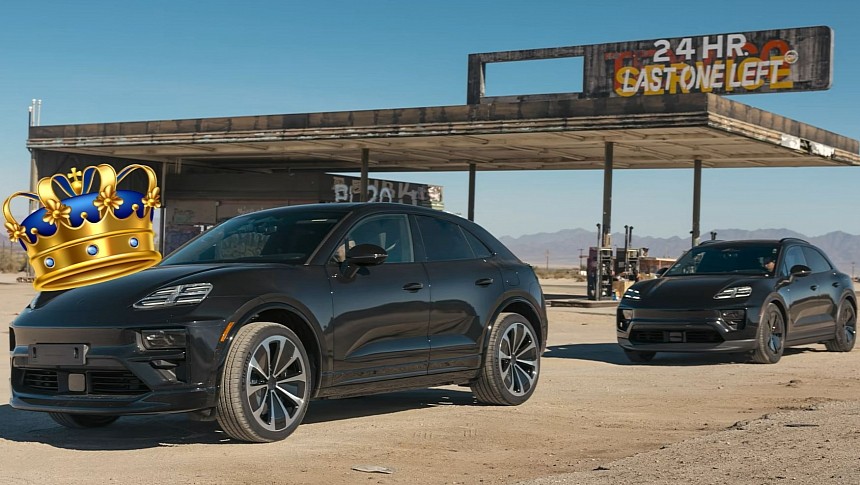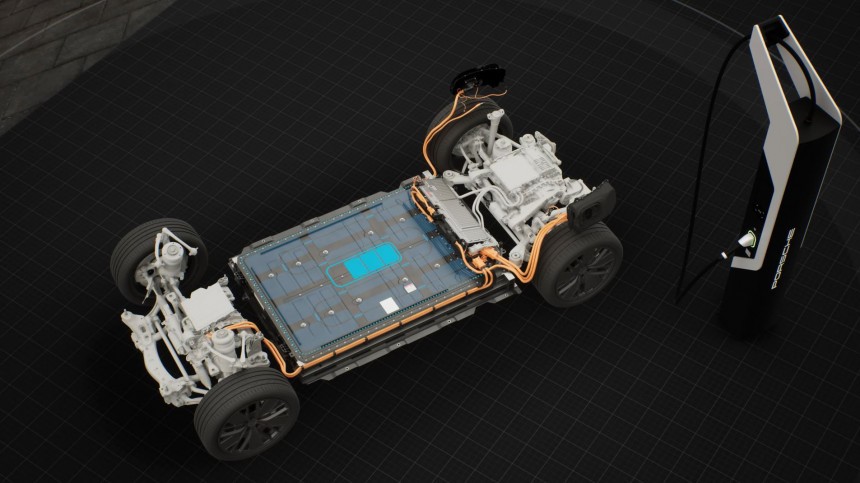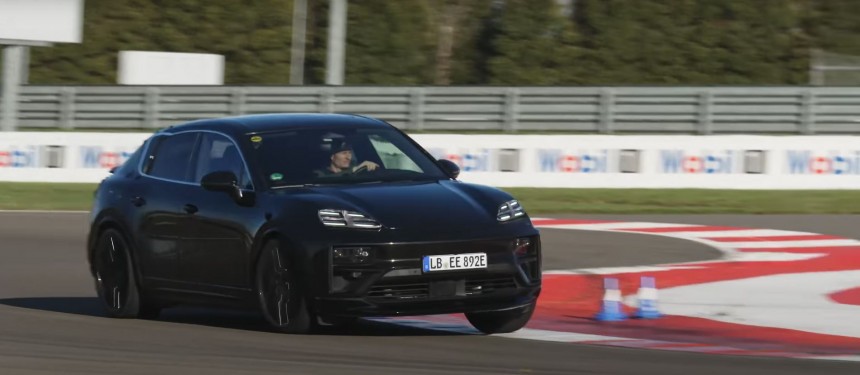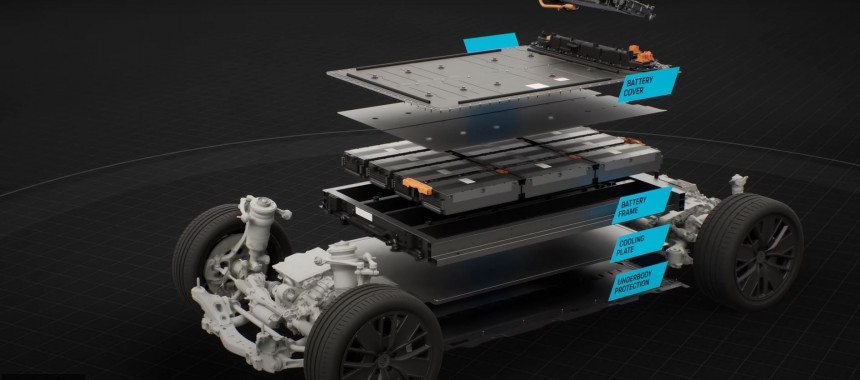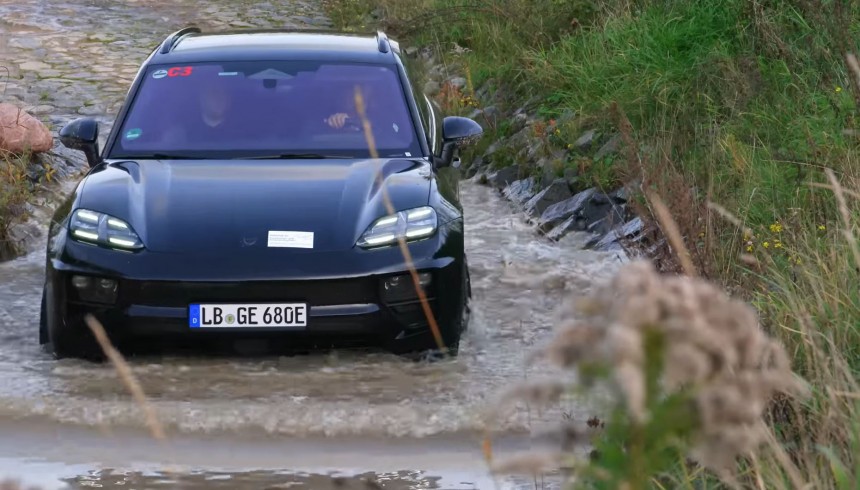Porsche proved it can make great EVs with the Taycan. Panamera's zero-emission sibling debuted as an important bet for the future, and it worked out. Customers loved it. Now, it's time for the Macan to prove what the Stuttgart-based marque improved. Here's why you might want to wait for it.
I was one of the people who doubted the greatness of the all-electric Porsche. Hybrids and plug-in hybrids made sense because the brand was all about driving dynamics and impressive speed. The 911 Turbo S, for example, is a masterclass in automotive engineering. But a heavy, battery-powered Porsche with a Tesla-like drivetrain? Color me skeptical.
All that changed when I first experienced a Taycan 4S. Suddenly, the absence of one-pedal driving and the two-speed gearbox made sense. The sedan was very, very good. It even performed well on the track. It didn't overheat. It didn't require Tesla-like preconditioning. It didn't destroy its brakes.
However, what the Taycan lacked was an impressive real-world range and interior room for those sitting in the rear. The Environmental Protection Agency (EPA) tells us that the latest all-wheel-drive 4S version of the EV can do:
The dual-motor Lucid Air Touring with its 92-kWh high-voltage energy storage unit drove 384 miles on a full charge after being put through the same EPA test cycle.
But for Porsche's first dive into the world of all-electric vehicles, that was good enough.
It had the advantage of replenishing its battery pretty fast, thanks to the 800V architecture and a decent charging curve. The elegant EV maintained a charging speed of 250 kW up to 25% and 200 kW up to 35%. Between 35% and 70%, the charging speed remained at around 150 kW.
The Macan may not be the one that saved Porsche from bankruptcy as the Boxster and the Cayenne did, but the crossover is very important to the brand. In the first nine months of 2023, over 68,000 people worldwide took delivery of their Macan. In the US, the Macan has consistently represented around a third of all Porsches sold in all 50 states for the last couple of years. It matters!
But will the all-electric Macan benefit from the same level of customer enthusiasm? We won't know for a while. However, the initial facts and figures are encouraging. Porsche might have another champion on its hands.
Bear in mind that the Macan EV will be sold alongside the internal combustion engine-powered Macan. The models are completely different. The only two things that bind them are their maker and the overall size. Other than that, they're going to be easy to distinguish. You'll quickly set them apart because the EV has split headlights and no exhaust system. It also looks like a mini-Cayenne.
Porsche refused to adopt the cylindrical cell layout, which would have had some structural advantages. However, they might have done it to enable customers to travel as far as they want to without having to spend too much time hooked to a DC fast charger. The Macan EV is poised to become one of the fastest-charging EVs ever because manufacturer data reveals a charging curve of around 270 kW that might be kept until a state of charge of around 70%.
Basically, you wouldn't have any reason to spend more than 15 minutes on a 350-kW fast charger. From 10% to 80% state of charge, it would theoretically take no more than 20-something minutes. That's what's needed to truly enable EV owners to travel where they want, when they want. Let's hope that kWh pricing won't bring us a nasty surprise.
Some of our readers may know that Porsche is moving to NACS and that Tesla has not yet updated its charging hardware to enable 800V vehicles (like the Cybertruck) to take full advantage of this architecture. Fret not; until V4 Superchargers are up and running nationwide, the Macan EV will be able to fast-charge at less powerful stalls. It can split its pack into two equal parts and eat all the electrons like a gastronome at a rate of up to 150 kW.
AC charging at home (with a Level 2 charger) is possible at speeds of up to 11.5 kW.
Interestingly enough, the Macan EV, with its brand-new platform and a one-speed transmission, doesn't have an octovalve. It can't take advantage of heat scavenging like all Tesla EVs do. That means the battery can't offload some of its heat to the cabin. Such a feature should guarantee an efficiency improvement of about 10%. Porsche opted for a six-kW resistive heater and a heat pump instead.
The Macan EV will also have air suspension and rear-wheel steering as options. Porsche really wanted to make a partner for long journeys and comfy city driving out of this zero-emission crossover SUV. As you may already expect, there will be an off-road mode.
But all those things that can be perceived as drawbacks for a built-from-the-ground-up EV don't hurt the crossover SUV at all. A recent Edmunds range test conducted with the "lower-trim" and "top-trim" Macan EV revealed some impressive figures.
We expect the "lower-trim" to be the Macan EV 4 and the "top-trim" to be unveiled as the Macan EV Turbo. The former drove 325 miles, while the latter covered 298 miles. Both arrived with over five miles to spare at the destination. That's impressive! But not because both EVs showed they could comfortably go from San Jose to Sacramento and back without recharging, no.
It was an outstanding outcome because the range test was conducted at an average speed of 65 mph, with three people sitting inside, and the A/C and the drivetrain set to Normal mode. No funny "Eco" business here!
The Macan EV could very well become the most important Porsche and stay that way for a while. At the same time, it is a promising preview of what the all-electric Cayenne and its incoming three-row sibling could be capable of. It remains to be seen just how pricey the Macan EV will be. I suspect that's going to be the one thing keeping people from adding one to their driveway.
All that changed when I first experienced a Taycan 4S. Suddenly, the absence of one-pedal driving and the two-speed gearbox made sense. The sedan was very, very good. It even performed well on the track. It didn't overheat. It didn't require Tesla-like preconditioning. It didn't destroy its brakes.
However, what the Taycan lacked was an impressive real-world range and interior room for those sitting in the rear. The Environmental Protection Agency (EPA) tells us that the latest all-wheel-drive 4S version of the EV can do:
- 206 miles when equipped with the small 79.2-kWh battery;
- 235 miles when equipped with the big 93.4-kWh battery.
The dual-motor Lucid Air Touring with its 92-kWh high-voltage energy storage unit drove 384 miles on a full charge after being put through the same EPA test cycle.
But for Porsche's first dive into the world of all-electric vehicles, that was good enough.
Time for an upgrade
Porsche is getting ready to add another EV to its roster through the complete electrification of the popular Macan. This one is supposed to show that the Stuttgart-based automaker learned the most important lessons regarding zero-emission propulsion. It should also reveal that the marque has what it takes to sway more of its customers away from internal combustion engine-powered cars.The Macan may not be the one that saved Porsche from bankruptcy as the Boxster and the Cayenne did, but the crossover is very important to the brand. In the first nine months of 2023, over 68,000 people worldwide took delivery of their Macan. In the US, the Macan has consistently represented around a third of all Porsches sold in all 50 states for the last couple of years. It matters!
But will the all-electric Macan benefit from the same level of customer enthusiasm? We won't know for a while. However, the initial facts and figures are encouraging. Porsche might have another champion on its hands.
Details worth knowing
The Macan EV has the Premium Platform Electric (PPE) as its underpinnings, which will be shared with the Q6 e-tron and the A6 Avant e-tron. The 100-kWh battery pack comprises 12 modules with 15 prismatic cells each. There's also a pyro fuse. In case of a crash, the high-voltage energy storage unit is insulated from the crossover SUV.Porsche refused to adopt the cylindrical cell layout, which would have had some structural advantages. However, they might have done it to enable customers to travel as far as they want to without having to spend too much time hooked to a DC fast charger. The Macan EV is poised to become one of the fastest-charging EVs ever because manufacturer data reveals a charging curve of around 270 kW that might be kept until a state of charge of around 70%.
Basically, you wouldn't have any reason to spend more than 15 minutes on a 350-kW fast charger. From 10% to 80% state of charge, it would theoretically take no more than 20-something minutes. That's what's needed to truly enable EV owners to travel where they want, when they want. Let's hope that kWh pricing won't bring us a nasty surprise.
Some of our readers may know that Porsche is moving to NACS and that Tesla has not yet updated its charging hardware to enable 800V vehicles (like the Cybertruck) to take full advantage of this architecture. Fret not; until V4 Superchargers are up and running nationwide, the Macan EV will be able to fast-charge at less powerful stalls. It can split its pack into two equal parts and eat all the electrons like a gastronome at a rate of up to 150 kW.
Interestingly enough, the Macan EV, with its brand-new platform and a one-speed transmission, doesn't have an octovalve. It can't take advantage of heat scavenging like all Tesla EVs do. That means the battery can't offload some of its heat to the cabin. Such a feature should guarantee an efficiency improvement of about 10%. Porsche opted for a six-kW resistive heater and a heat pump instead.
Maximizing what matters most
It also decided to keep both axles engaged at all times on the two models that are coming soon, which means the Macan EV won't become front- or rear-wheel-drive to conserve energy when coasting on the highway. It will, however, have a rear-wheel bias because the motor inverter installed on the rear axle is silicon carbide, whereas the front drive unit is just silicon. The former is more efficient.The Macan EV will also have air suspension and rear-wheel steering as options. Porsche really wanted to make a partner for long journeys and comfy city driving out of this zero-emission crossover SUV. As you may already expect, there will be an off-road mode.
We expect the "lower-trim" to be the Macan EV 4 and the "top-trim" to be unveiled as the Macan EV Turbo. The former drove 325 miles, while the latter covered 298 miles. Both arrived with over five miles to spare at the destination. That's impressive! But not because both EVs showed they could comfortably go from San Jose to Sacramento and back without recharging, no.
It was an outstanding outcome because the range test was conducted at an average speed of 65 mph, with three people sitting inside, and the A/C and the drivetrain set to Normal mode. No funny "Eco" business here!
The Macan EV could very well become the most important Porsche and stay that way for a while. At the same time, it is a promising preview of what the all-electric Cayenne and its incoming three-row sibling could be capable of. It remains to be seen just how pricey the Macan EV will be. I suspect that's going to be the one thing keeping people from adding one to their driveway.
